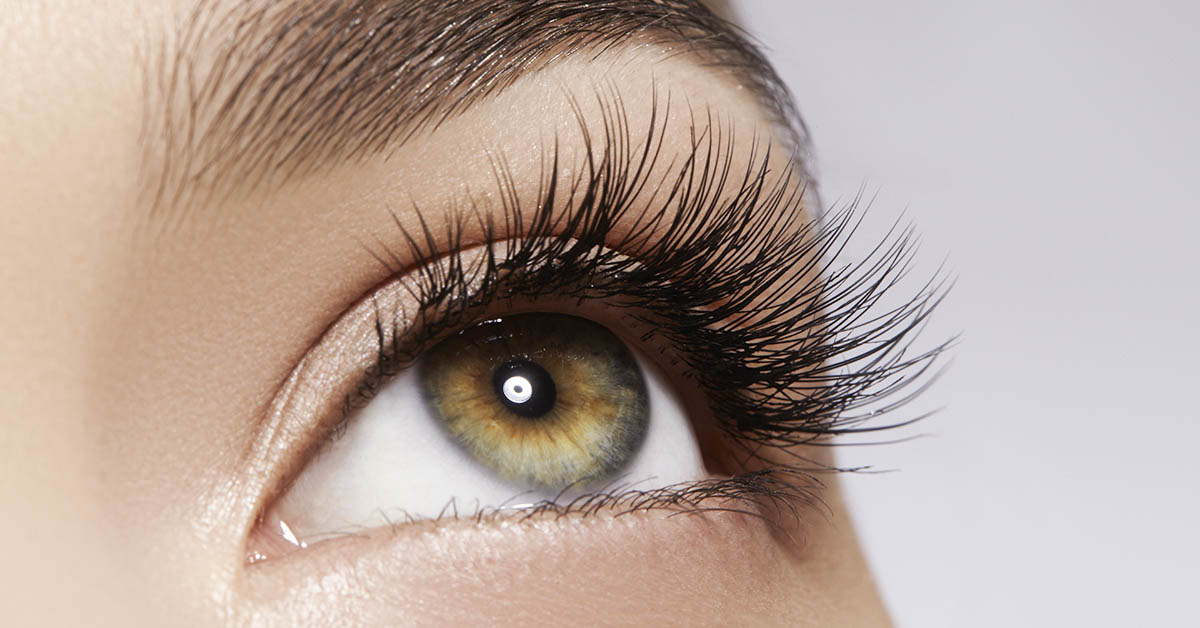Castor oil has gained popularity in recent years as a natural remedy for hair growth, including eyelashes and eyebrows. Many claim that regularly applying castor oil to these areas can result in thicker, longer lashes and fuller brows. Let’s have a look at the potential benefits of castor oil for eyelash and eyebrow growth and determine whether or not there is sufficient evidence to back it up.
Understanding Castor Oil

Castor oil is derived from the seeds of the castor oil plant (Ricinus communis) and has a long history of use in traditional medicine. It is rich in various nutrients and compounds, with ricinoleic acid being the primary component, accounting for nearly 90 percent of the oil’s composition. Ricinoleic acid is believed to possess anti-inflammatory, antimicrobial, and moisturizing properties, making it a potential candidate for hair growth promotion. (1)
Read More: 6 Ways Castor Oil May Benefit Your Health
The Claims Behind Castor Oil

Many proponents of castor oil for eyelash and eyebrow growth argue that its application can stimulate hair follicles, leading to increased growth and thickness. They believe that ricinoleic acid penetrates the skin and hair follicles, nourishing them and promoting blood circulation. This, in turn, stimulates hair growth.
However, it is crucial to highlight that these claims are primarily based on anecdotal evidence and personal experiences rather than rigorous scientific studies. While many individuals swear by the effectiveness of castor oil for hair growth, the lack of scientific evidence calls for caution and further research. That being said, some studies on ricinoleic acid, also known as protein prostaglandin D2, have shown benefits for stimulating hair growth. Again, it is important to keep in mind that these studies were done specifically on this compound, not on castor oil. Though ricinoleic acid does make up 90% of caster oil, you can’t make direct conclusions based on those studies. (2, 3)
The Need for Scientific Studies

Despite the widespread use of castor oil for hair growth, the scientific community has yet to conduct extensive research on its efficacy. While some studies on in vitro models and animal subjects have shown the potential benefits of ricinoleic acid in promoting hair growth, human trials are limited, if not entirely absent.
To establish castor oil’s true potential in stimulating hair growth, well-designed clinical studies are required. These studies should include a significant sample size, randomization, controlled environments, and objective measurement techniques. Only then can scientists provide concrete evidence supporting or refuting the claims made by castor oil enthusiasts.
Read More: 25 Ways Peppermint Oil Can Make Your Life Better
How To Use Castor Oil For Eyelashes and Eyebrows

If you are interested in using castor oil in an attempt to achieve longer, thicker lashes and eyebrows, there are some things you should know. First of all, you must make sure that you are purchasing a pure castor oil that hasn’t been blended with other oils. For beauty treatments, there are two types of castor oil that are used: Jamaican and cold-pressed. Jamaican is darker in color, while cold-pressed is white. Jamaican is the most commonly used one for beauty treatments.
Before treating your eyebrows or eyelashes, do a patch test on a discreet patch of skin to determine whether or not you have any irritations or reactions. Once tested and all clear, the best time to treat your eyelashes is before you go to bed. To treat your eyelashes with castor oil:
- clean your eyelashes and make sure they are completely makeup-free
- dip a cotton swab gently in the castor oil so that you have just a light amount of the oil on the swab
- delicately run the cotton swab along the top of your lash line, taking great care to not allow any of the oil into your eye (oil that gets in your eye could be extremely irritating and should be washed out immediately with water)
- wash off the castor oil in the morning with water or makeup remover
Again, any adverse reactions or problems, stop using the oil immediately and rinse it away as best you can. If irritation continues, go see your health care provider for assistance.
Alternative Treatments and Precautions

While waiting for scientific studies, individuals interested in enhancing their eyelashes and eyebrows can explore other methods that have been scientifically proven to stimulate hair growth. These may include proper nutrition, maintaining good overall health, avoiding harsh cosmetic products, and using approved eyelash serums or medications prescribed by healthcare professionals.
It is also essential to consider individual differences and potential allergic reactions before trying any new product. Conduct a patch test prior to applying castor oil onto your eyelashes and eyebrows to ensure there is no adverse reaction. If irritation, redness, or discomfort occurs, discontinue use immediately and consult a healthcare professional.
The Bottom Line

The belief that castor oil can thicken and regrow eyelash and eyebrow hair comes primarily from anecdotal evidence and personal experiences. While there have been some promising scientific studies on the potential benefits of ricinoleic acid, they are limited, and more research is necessary to validate these claims.
Until more substantial scientific evidence emerges, it is recommended to approach the use of castor oil for eyelash and eyebrow growth with caution. Combining a healthy lifestyle, proper nutrition, and consulting with professionals can provide more reliable and proven methods to help stimulate hair growth.
Read More: 21 of the Best Natural Oils for Your Skin and Hair (Benefits and How to Use)
Sources
- “Castor Oil and its Chemistry.” Chem
- “Prostaglandin D2 Inhibits Hair Growth and Is Elevated in Bald Scalp of Men with Androgenetic Alopecia.” NCBI. Luis A. Garza,, et al. March 2012.
- “In silico prediction of prostaglandin D2 synthase inhibitors from herbal constituents for the treatment of hair loss.” Pubmed. Pedro Fong , et al. December 2015.

